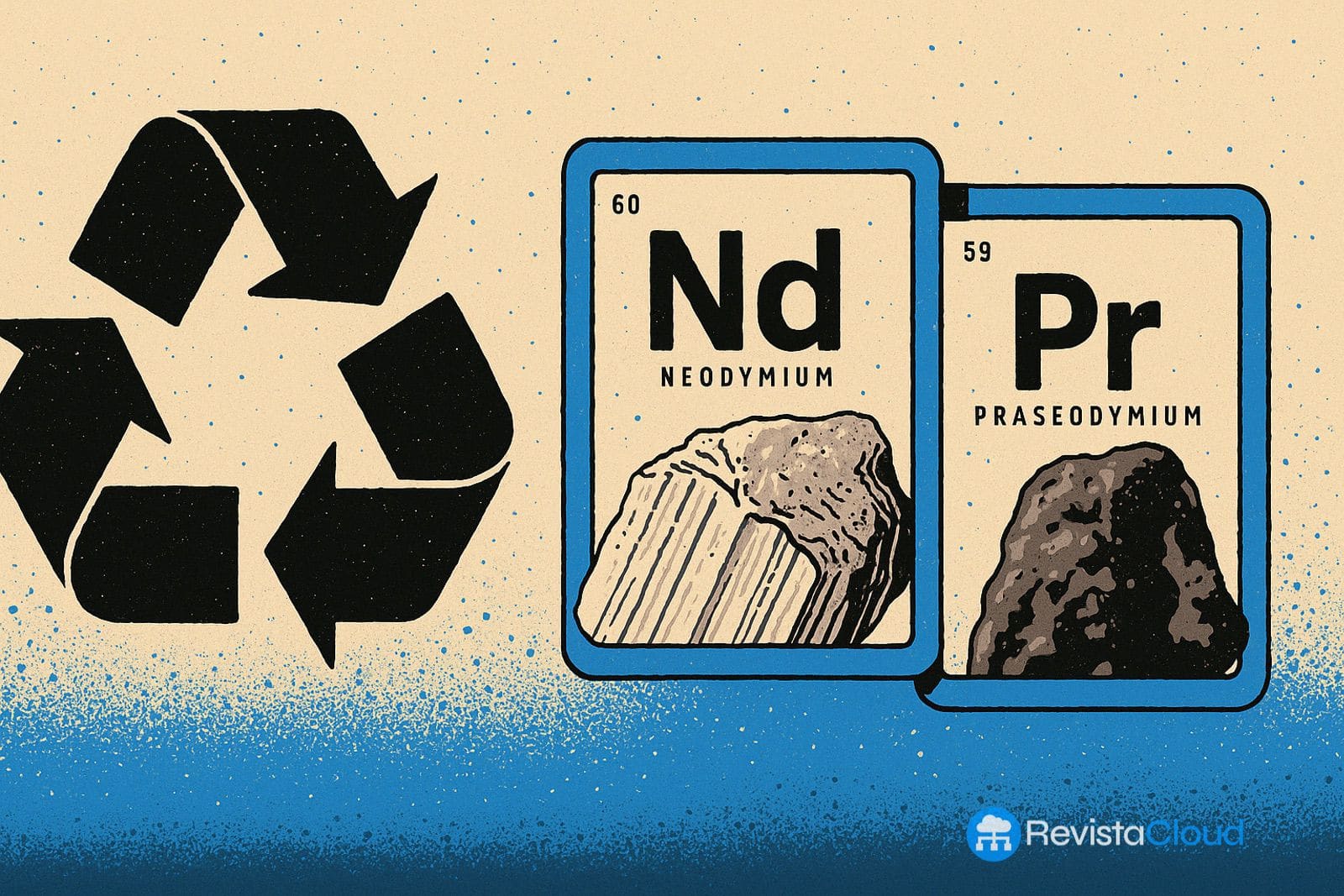The company transforms over 22,000 kilograms of retired storage units into reusable critical materials through a process that is acid-free and produces 95% less emissions.
In a global context where sustainability is a strategic priority, Western Digital has taken a decisive step toward a circular economy by implementing its ambitious Advanced Recycling and Rare Earth Material Capture Program, a project aimed at recovering rare earth elements from hard disk drives (HDD) at the end of their lifecycle.
According to IDC data, global data generation is expected to grow from 132.4 zettabytes in 2023 to 393.9 ZB by 2028, with hard drives continuing to account for nearly 80% of the storage capacity used in cloud data centers and hyperscale infrastructures. In this context, responsible recycling of these devices is crucial.
The Hidden Value in Every HDD
Hard drives are composed of multiple valuable materials: aluminum, steel, and especially rare earth elements such as neodymium, dysprosium, and praseodymium. These elements are essential for the magnetic performance of HDDs, enabling quick and accurate data reading and writing.
However, for security reasons, many data centers physically destroy hard drives when they reach the end of their use cycle, traditionally resulting in the loss of these materials. Western Digital’s new program offers a sustainable alternative: efficiently recovering rare earth elements in an environmentally friendly way.
A Pioneering Collaboration
Rhownica Birch, Director of Global Product Operations Sustainability at Western Digital, led the program’s development alongside her team, in collaboration with Critical Materials Recycling (CMR), Ames National Laboratory (through its Critical Materials Innovation Hub), and Microsoft, which provided retired units from its data centers.
The key to this process is the use of acid-free recycling technology (Acid-Free Dissolution Recycling, ADR), developed by CMR. Unlike conventional methods that involve corrosive and polluting processes, this approach allows for the efficient separation of materials, achieving rare earth recovery rates over 90% and 80% reuse of the shredded material.
The large-scale pilot completed in December 2024 processed approximately 22,700 kilograms of hard drives and associated components, demonstrating that the model can be applied at an industrial scale.
Lower Carbon Footprint and New Uses
In addition to high recovery rates, the process generates 95% less carbon emissions compared to traditional rare earth mining. This positions the project as a benchmark in the search for sustainable solutions for industries reliant on electronic components.
Once extracted, the elements are reintegrated into the U.S. supply chain, and can be used not only in the manufacturing of new hard drives but also in sectors like electric vehicles and renewable energy. “The advances made in recovering rare earth elements from hard drives can be directly applied to electric vehicles and wind turbines,” says Daniel Bina, CEO of CMR.
Towards a Model of Total Circularity
For Birch, the most inspiring aspect is that this model can be extended to other sectors: “We are becoming a model for an ecosystem with a positive carbon footprint; it’s something we created that can be applied beyond our industry,” she explains.
Western Digital now aims to engage more technology partners and customers in this advanced recycling ecosystem, with the goal of moving towards a truly circular production and consumption system.
The HDD recycling and rare earth recovery program not only represents a milestone in sustainability for the data storage sector but also sets a precedent for the global technology industry as a whole.
Source: Western Digital

